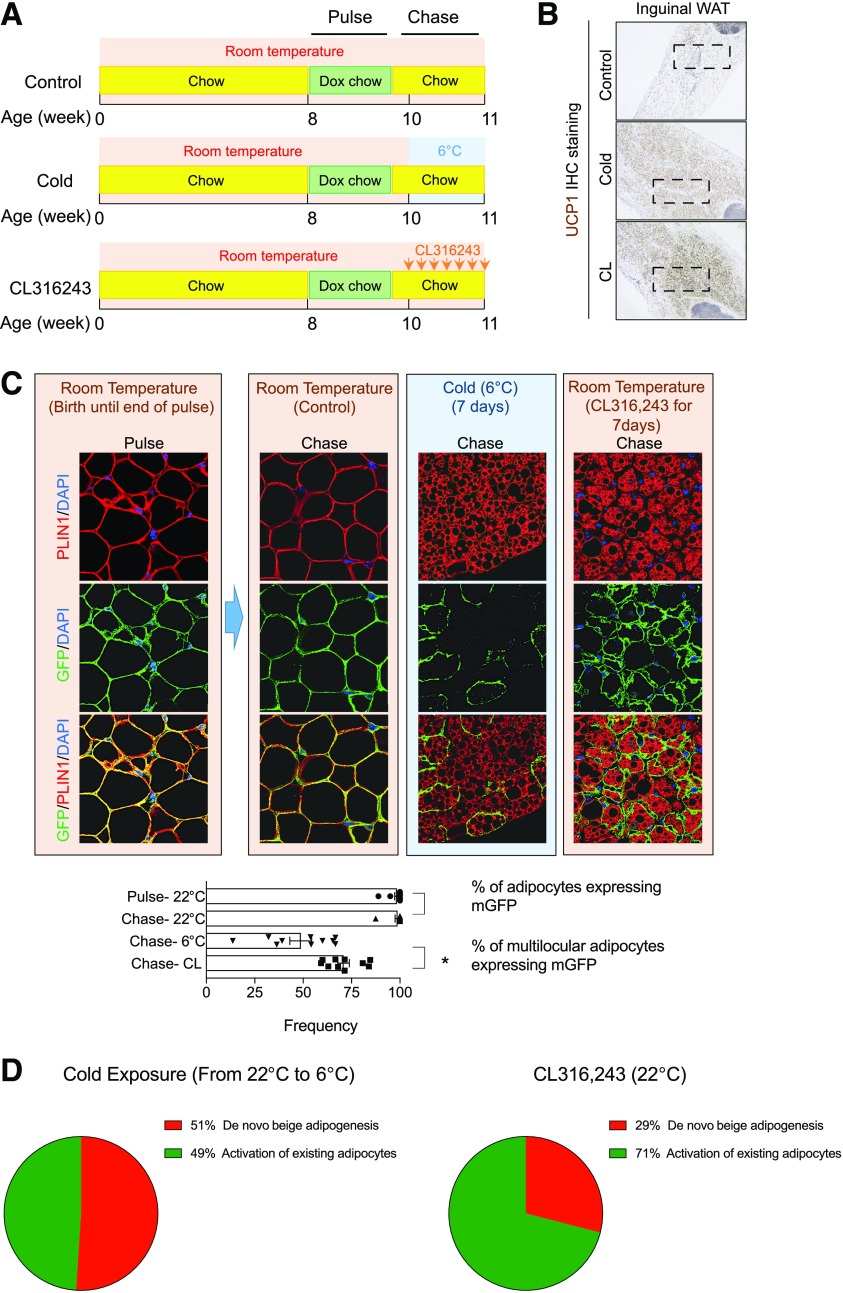Figure 2.
Cellular origins of beige adipocytes in mice born and raised at 22°C (room temperature). A: AdipoChaser mice born and raised at room temperature were fed a standard chow diet until 8 weeks of age before being switched to doxycycline (Dox)-containing chow diet (600 mg/kg) for 10 days (“Pulse”). Following the pulse-labeling period, mice were switched back to the standard chow diet (no doxycycline) for 3 days before being subjected to cold exposure (6°C) or β3-adrenergic receptor agonist CL316,243 (CL) administration (10 mg/kg/day) for 7 days (“Chase”). B: Representative 4× brightfield image of UCP1 expression in inguinal WAT sections from mice following the Chase period. In this and all subsequent figures, boxed regions (black) highlight regions surveyed for quantitative analysis. C: Representative 63× image of inguinal WAT sections stained with anti-GFP (green) and anti-PERILIPIN (red) antibodies and counterstained with DAPI (blue [nuclei]) at indicated time points. Bar graphs/scatter plots (mean ± SD) depict the percentage of PERILIPIN+ cells expressing GFP at indicated time points. *P < 0.05 from Student t test. All immunohistochemistry (IHC) and indirect immunofluorescence assays in this figure and all other figures were performed as previously described (22,34). In this figure, and all other figures, each data point represents number of fields of cells counted within the boxed region shown in B. In each field (n = 10), >20 adipocytes were quantified. In total, >200 adipocytes were counted for each condition. D: Pie chart summarizing the relative contribution of de novo adipogenesis vs. adipocyte activation/interconversion to the total pool of beige adipocytes originating following exposure to cold temperatures or β3-adrenergic receptor agonist. Percentages indicated represent mean values from the data shown in C.

